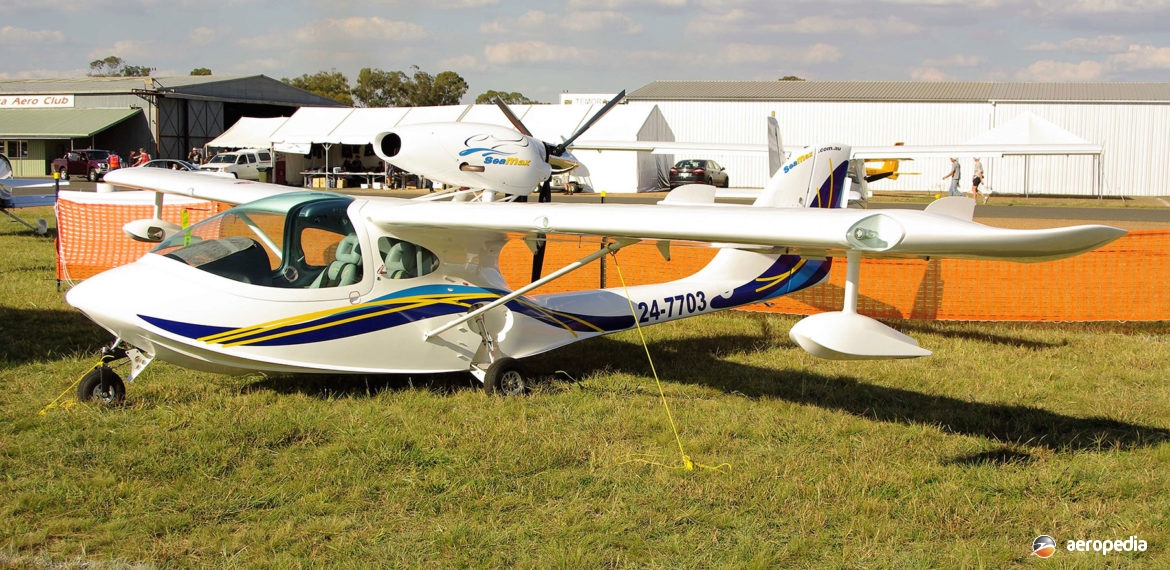Photograph:
Airmax Seamax amphibian 24-7703 (c/n 103) at Temora, NSW in April 2012 (David C Eyre)
Country of origin:
Brazil
Description:
Two-seat light sport amphibian
Power Plant:
One 75 kw (100 hp) Rotax 912S four-cylinder horizontally-opposed liquid-air-and-cooled engine
Specifications:
- Wingspan: 8.74 m (28 ft 7 in)
- Length: 5.66 m (18 ft 6 in)
- Wing area: 12.07 m² (130 sq ft)
- Max speed: 257 km/h (160 mph)
- Max cruising speed: 209 km/h (130 mph)
- Economical cruising speed: 185 km/h (115 mph)
- Initial rate of climb: 305 m/min (1,000 ft/min)
- Stalling speed flaps up: 66 km/h (41 mph)
- Stalling speed flaps down: 58 km/h (36 mph)
- Take-off and landing run: 91 m (300 ft)
- Take-off and landing run on water: 107 m (350 ft)
- Endurance: 4.5 hours
- Fuel capacity: 94.6 litres (20.8 Imp gals)
- Empty weight: 340 kg (750 lb)
- Loaded weight: 599 kg (1,320 lb)
History:
Designed by Miguel Rosario, the Seamax was a kit-built two-seat, side-by-side, all composite amphibious flying boat which utilised computer aided design and sophisticated mould making technology. Fitted with a retractable tricycle undercarriage, it had a retractable water rudder included in the rudder for operation on water. It had a pylon-mounted engine, this being a 75 kw (100 hp) Rotax 912S driving a three-blade Warpdrive propeller.
Examples of the kit have been delivered to operators around the world and examples of the Seamax have been built in the US, Portugal, Sweden, Italy, France, Argentina, the United Kingdom, Panama, Croatia, Finland, Greece, Taiwan, Cambodia, Norway and Canada.
First of the type completed in Australasia was 24-7234 (c/n 77) first flown in 2010; followed by 24-7703 (c/n 103). Further examples have been imported, including 24-7789 (c/n 110), 24-7757 (c/n 30), 24-7874 (c/n 112), and 24-7976 (c/n 116).

